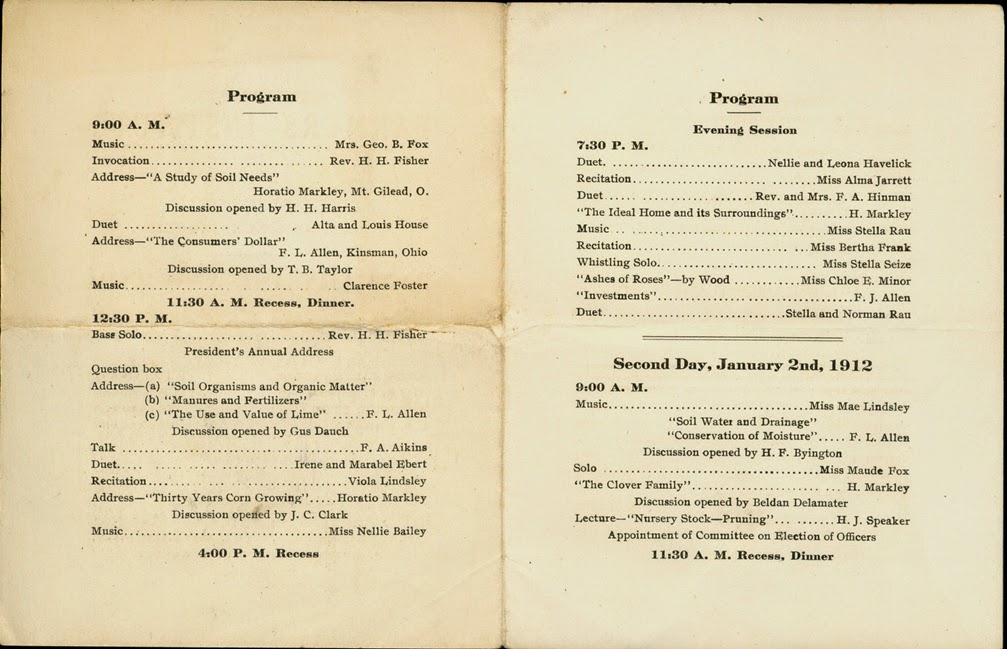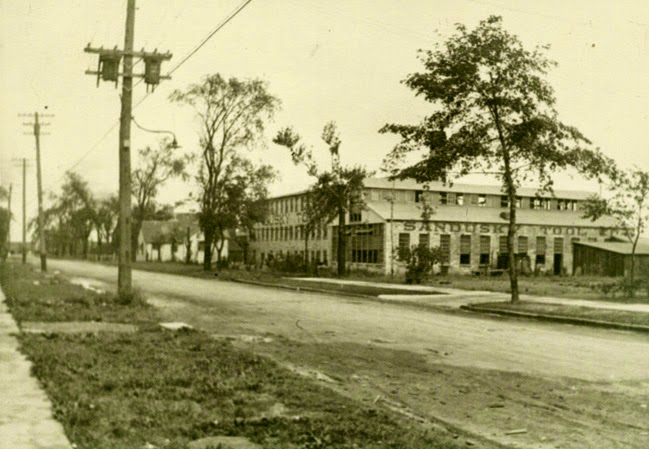Shortly after the original Sandusky Library building opened in 1901, the library established a room on the upper level dedicated to the preservation of items of historical interest. The historical museum of the Sandusky Library was founded by the Board of Trustees in 1905. The museum featured artifacts, photographs, maps and other documents from the early days of Sandusky and Erie County. Mary McCann, longtime head librarian of the Sandusky Library, stated in the early years, the alcove room which stored the historical items must have looked like someone’s crowded attic.
Mrs. Charles Merz, the former Sakie Prout, was chairman of the museum committee from 1920 through 1942. Through the efforts of Mrs. Merz, the space was enlarged, items were cataloged, and the museum policy was organized. The historical museum in the library was usually open to the public on one Saturday afternoon each month. Special tours were given at other times for school groups and community organizations. Ruth Thomas wrote an article about the museum in the June 8, 1919 issue of the Sandusky Register entitled, “Romance of City’s Past Within Library Museum." The author stated that “Sandusky’s story in times of war and peace is portrayed in the collections of relics” at the historical museum. She pointed out some of the highlights of the museum, including a chair made from the battleship Lawrence from the Battle of Lake Erie, a wooden grave marker from the former Civil War prison camp at Johnson’s Island, and household items and clothing from an era gone by. In October of 1942, the museum displayed an exhibit of antique salt cellars.
Sister Mary Delphine brought St. Mary’s High School history students to the museum in 1962:
In January of 1971, the estate of Dr. Norbert Lange donated photographs and documents to the museum. Dr. Lange had a lifelong interest in the economic, scientific, and cultural affairs of the community, so the gift from his estate greatly enriched the museum’s collections.
During the Sandusky Area Sesquicentennial celebration in June, 1968, the historical museum of the Sandusky Library was open for several days. Below are two young ladies in historical dresses.
In the picture below, taken at the museum on June 23, 1968, you can see a bell which hung from the towers of the first and second Erie County Courthouses, from about 1840 to 1936. Another antique dress is worn by a museum volunteer at the left.
The collections of the former historical museum of the Sandusky Library found a new home at the Follett House Museum in July, 1976. Each of the Museum’s four floors feature exhibits that document the story of Sandusky. You can take a virtual tour of the Follett House Museum online at the websiteof the Sandusky Library.






































































